Effnet Backhaul Compression™ (BHC™)
Background
The current header compression schemes IPHC (RFC 2507: IP Header Compression), CRTP (RFC 2508: Compressed RTP) and ROHC (RFC 3095 and RFC 5225: Robust Header Compression) compress single headers or one single header chain in IP packets. These schemes are very efficient in compressing these header chains and ROHC is particularly compression efficient as well as robust against bit errors and packet losses.

Figure 1: Examples of single layer protocol header chains in an IP packet
There are many situations where multiple IP header chains are present in an IP packet e.g. in 3GPP LTE backhaul, relay base stations and many such variants on satellite networks or microwave networks. The existing header compression schemes must be applied twice to compress two protocol layers and they are not able to compress headers such as Ethernet, MPLS, GTP-U, L2TP, PPP etc. Some of these links are high bandwidth high packet rate links and others typical home broadband connections being used for cellular small cell connectivity.
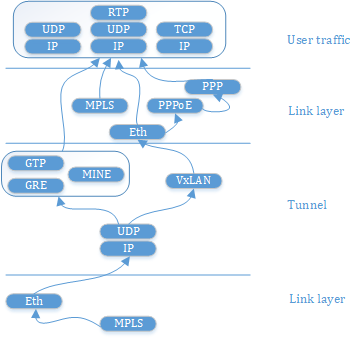
Figure 2: Examples of multiple layer protocol header chains in an IP packet
Effnet BHC™
Effnet has developed a new header compression scheme, Effnet BHC™, to be able to compress both one layer of IP header chains like all the existing header compression schemes and also compress multiple layers of IP header chains, including headers which are not supported by existing header compression schemes. Our long experience with header compression and ROHC has enabled us to develop Effnet BHC™ with the following three key properties.
Compression and System Efficiency
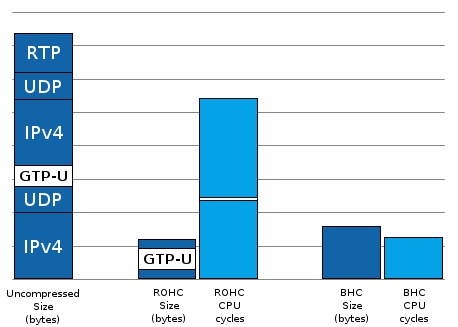
Figure 3: Comparison between Effnet BHC™ and ROHC
Effnet BHC™ is 2-3 times more system efficient than ROHC (requires far fewer CPU cycles) and is still capable of delivering a compression efficiency comparable with ROHC. Most importantly, it is a flexible and modular scheme that can be easily extended to add support for many other header types and tuned to achieve a desired balance of compression and system efficiency on the target link based on its bandwidth and packet rate.
Robustness
Effnet BHC™ is robust against packet loss. It has advanced header field encoding mechanisms coupled with feedback and error recovery to keep the compressor and decompressor in synchronization. It can efficiently handle reordering of packets on the link.
Features
- Support for compression of Ethernet, VXLAN, EoMPLS, MPLS, PPPoE and PPP headers
- Support for compression of GRE and GTP-U headers
- Support for compression of IPv4, IPv6, TCP, UDP and RTP headers
- Easily extended with additional header support, e.g. L2TP
- Robustness against packet loss. Both in the network and over the compressed link
- Robustness against jitter and packet reordering in the network
- Resilience against jitter and packet reordering over the compressed link
- Feedback fast recovery
- CPU and memory efficient implementation suitable for all types of devices
- Highly portable ISO/IEC 9899:1999 (C99) code with no operating system dependencies
- Platform and endianness (byte-order) independent
Effnet BHC™ Solutions
Effnet BHC™ compression on 4G/5G cellular backhaul links
Effnet BHC™ is a good choice for the high bandwidth link between the Small Cell and the Core Network. It could be either a microwave link or a satellite or broadband link. With the low CPU and memory usage of Effnet BHC™ such a solution can support more users or traffic flows than other more complex header compression schemes.
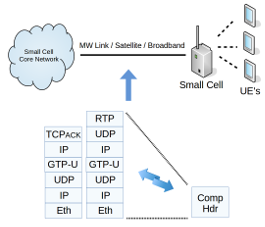
Figure 4: Effnet BHC™ application on a backhaul link
Effnet BHC™ VXLAN compression on datacenter tunnels
The VXLAN protocol is ubiquitously used in communication between disaggregated data centers. When such communication is made over links with limited bandwith, VXLAN compression is beneficial to increase the throughput and communication efficiency.
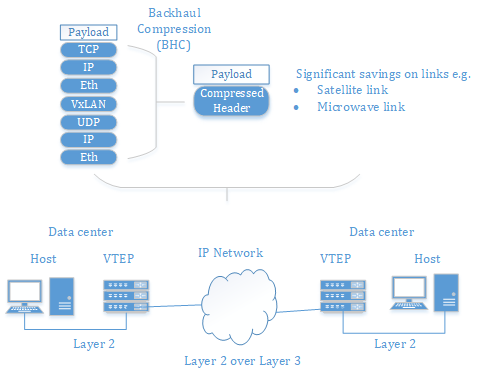
Figure 5: Effnet BHC™ application on a layer-2 tunnel between two datacenters
Effnet BHC™ PPPoE compression on last-mile access and in core networks
PPPoE is commonly used for last mile connectivity (end-customers) over DSL, FTTx, HFC etc. On the customer side, it is implemented on the customer premises equipment (CPE) and on the service provider side, it is implemented on the DSLAM or an Optical Node. When this link is carried over a satellite link or a microwave link i.e. a link with limited or costly bandwidth, Effnet Backhaul Header Compression (BHC) can save the bandwidth and improve user experience.
PPPoE is also used in core networks which can result in multiple layers of protocols including PPPoE over VXLAN over Ethernet. Effnet BHC is uniquely capable of compressing all these protocol layers to increase the throughput and communication efficiency.
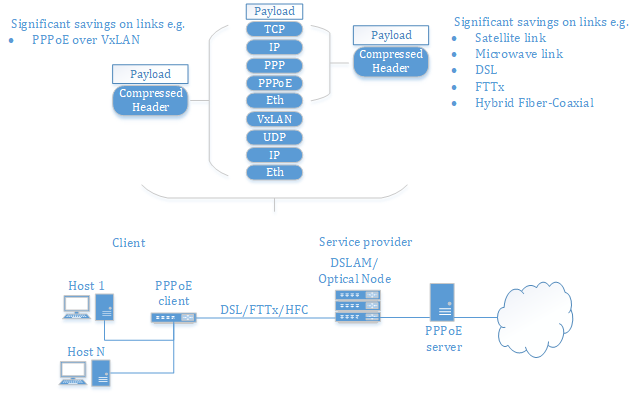
Figure 6: Effnet BHC™ applications on links where PPPoE is used.
Effnet BHC™ compression on 4G/5G cellular relay links
The Un interface, the interface between relay base stations, carries packets with multiple layers of IP header chains, including the GTP-U header, as shown below. 3GPP recognizes this substantial overhead particularly when the payload is small e.g. VoIP, TCP acknowledgements etc. Many alternatives for header compression schemes have been presented in 3GPP TR 36.806.
Effnet offers a better alternative, Effnet BHC™, which is highly compression efficient and system efficient. It is as robust as ROHC and avoids application of double compression using ROHC which would be prohibitively costly from system a efficiency point of view.
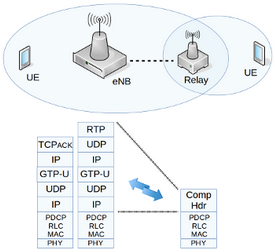
Figure 7: Effnet BHC™ application on a cellular relay link
Effnet BHC™ compression on satellite links
Satellite links carry all sorts of traffic including packets that carry multiple layers of IP header chains e.g. enterprise traffic that is encrypted and/or tunneled, GSM/CDMA/LTE/5G backhaul etc.
Effnet BHC™ can be configured and/or easily extended to support various types of headers e.g. PPP, L2TP etc.
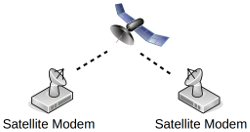
Figure 8: Effnet BHC™ application on a satellite link
Effnet BHC™ compression on microwave links
Microwave links typically serve specific applications e.g. inter-office (enterprise) or inter-nodal (industrial) connectivity, cellular backhaul etc. Most of the microwave links are high bandwidth, high packet rate links that carry IP traffic point-to-point or point-to-multipoint. In the case of some applications, the IP packets carry significant amount of IP header overhead due to the multiple layers of IP header chains present in a packet. In order to improve efficiency, it is necessary to apply header compression but the challenge is to balance between compression efficiency and system efficiency. The header compression function cannot consume too many CPU cycles per packet thus affecting throughput of the system.
Effnet BHC™ is highly system efficient and requires significantly less CPU cycles per packet compared to other header compression schemes such as ROHC. Still it is highly compression efficient due to its capability to compress multiple layers of IP header chains. It is also robust against packet loss and bit errors.
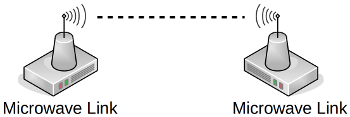
Figure 9: Effnet BHC™ application on a microwave link
Services
Effnet provides support and maintenance services covering problem reporting, bug fixes, updates, training, consulting and integration. A sample application code together with detailed documentation covering well defined and easy to use API is provided to speed up the process of integration.
